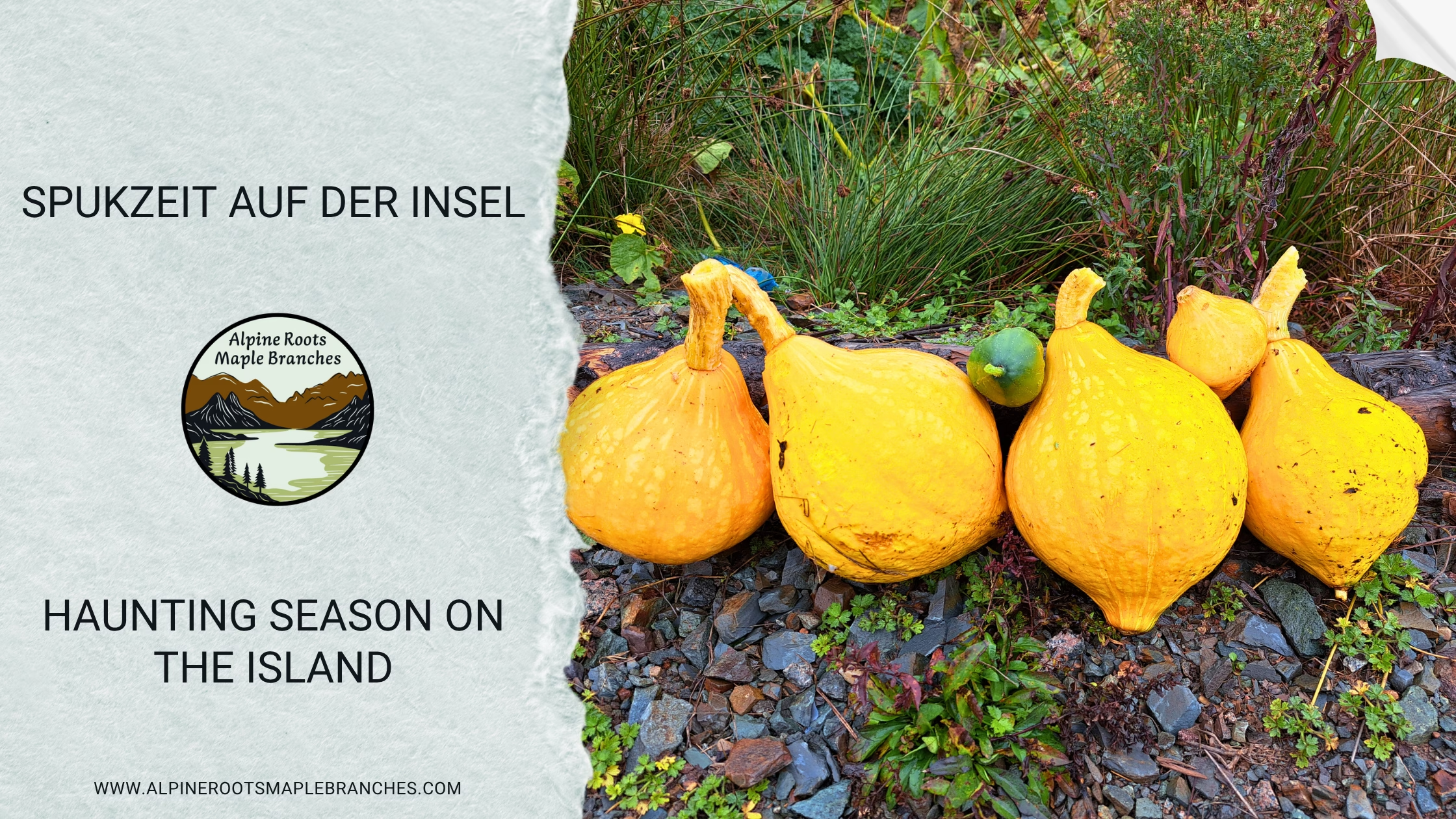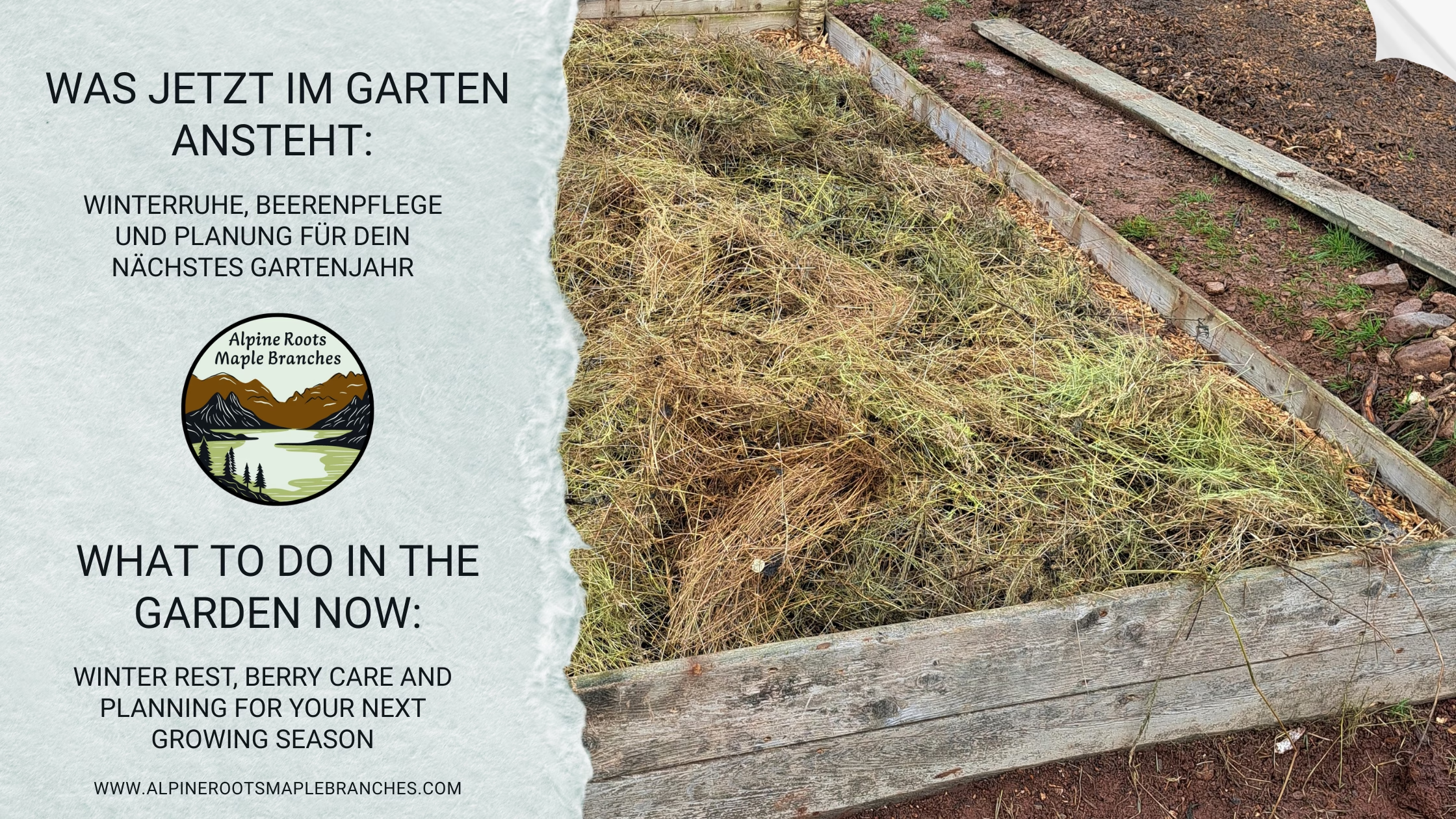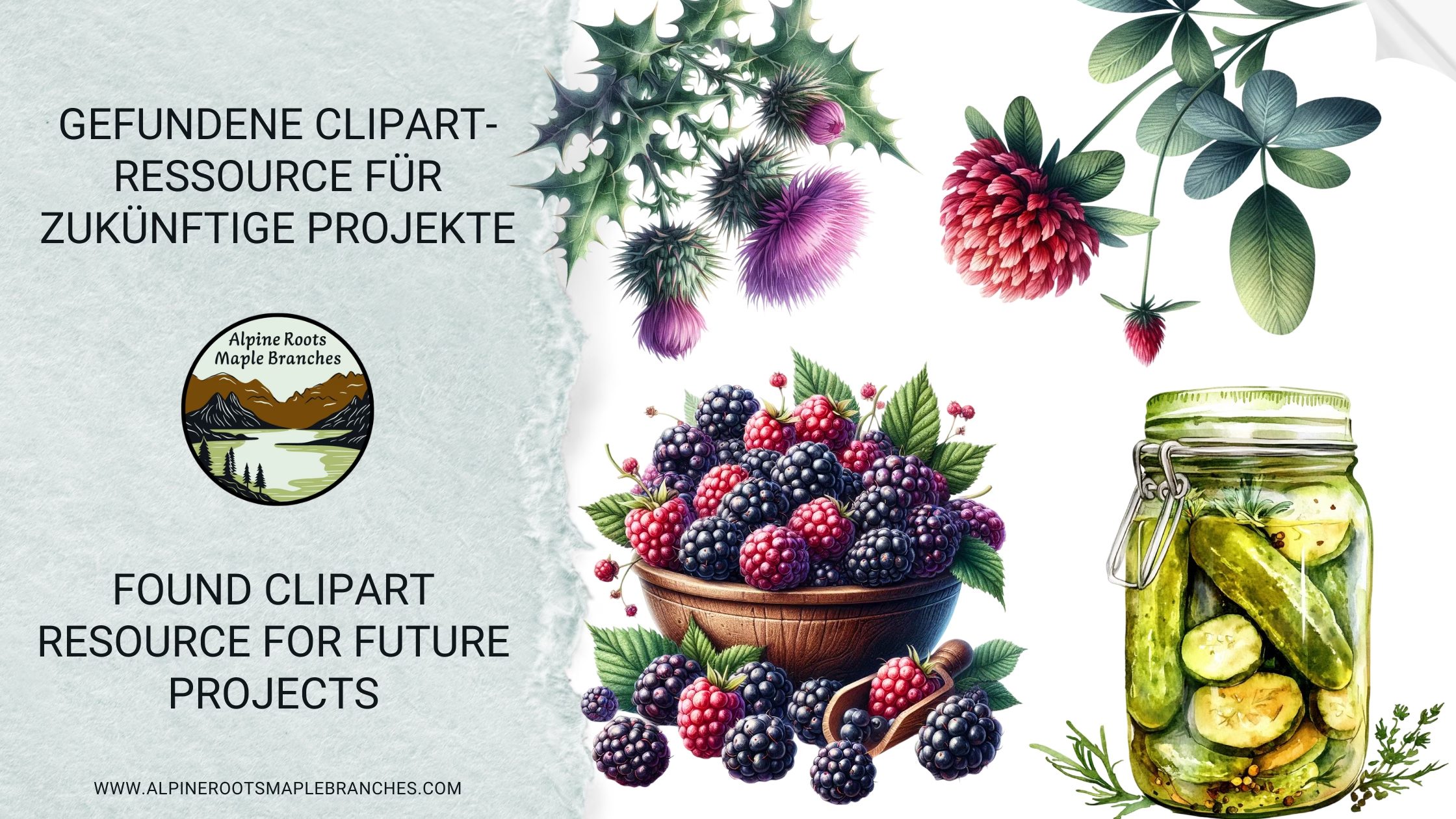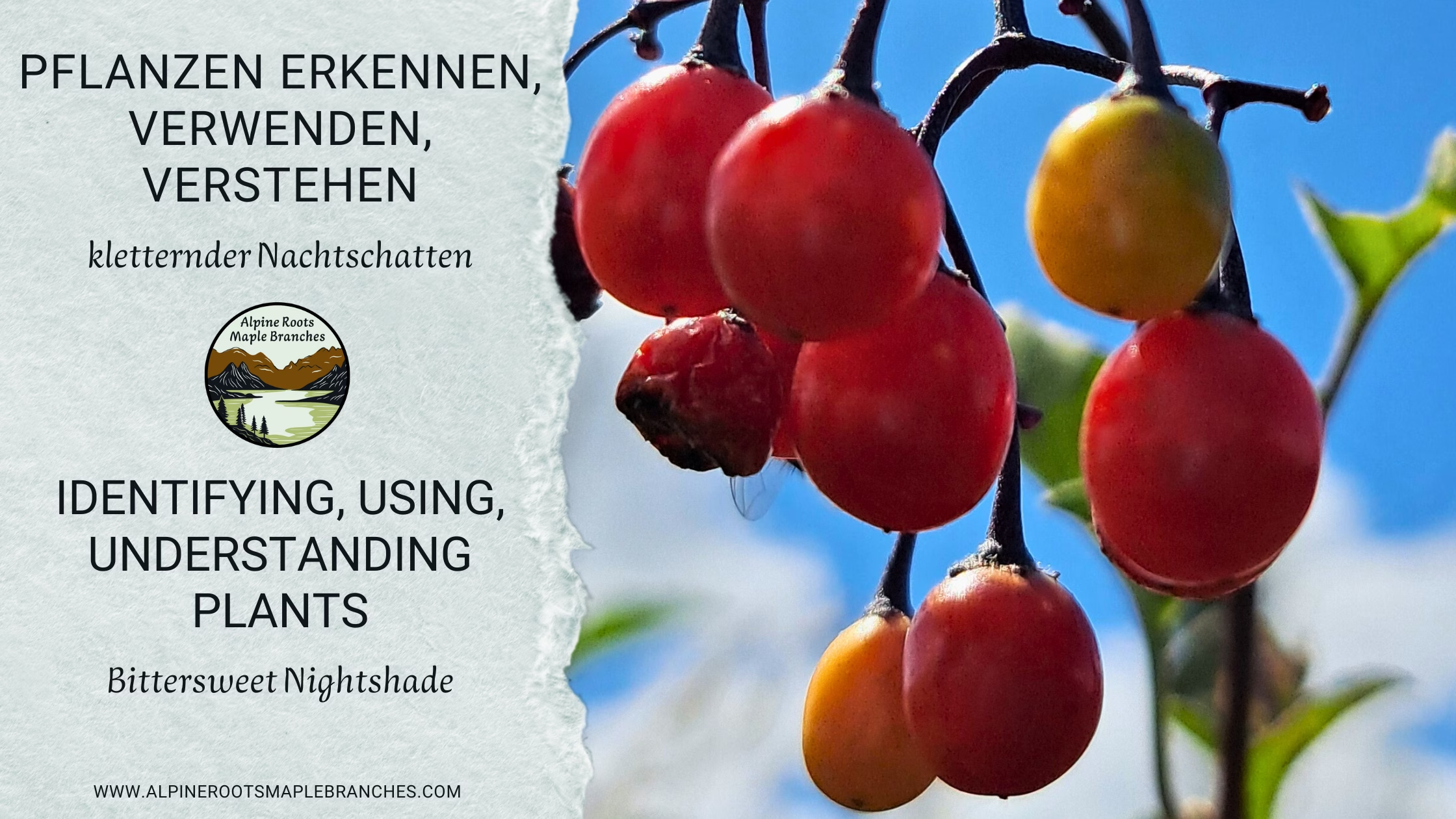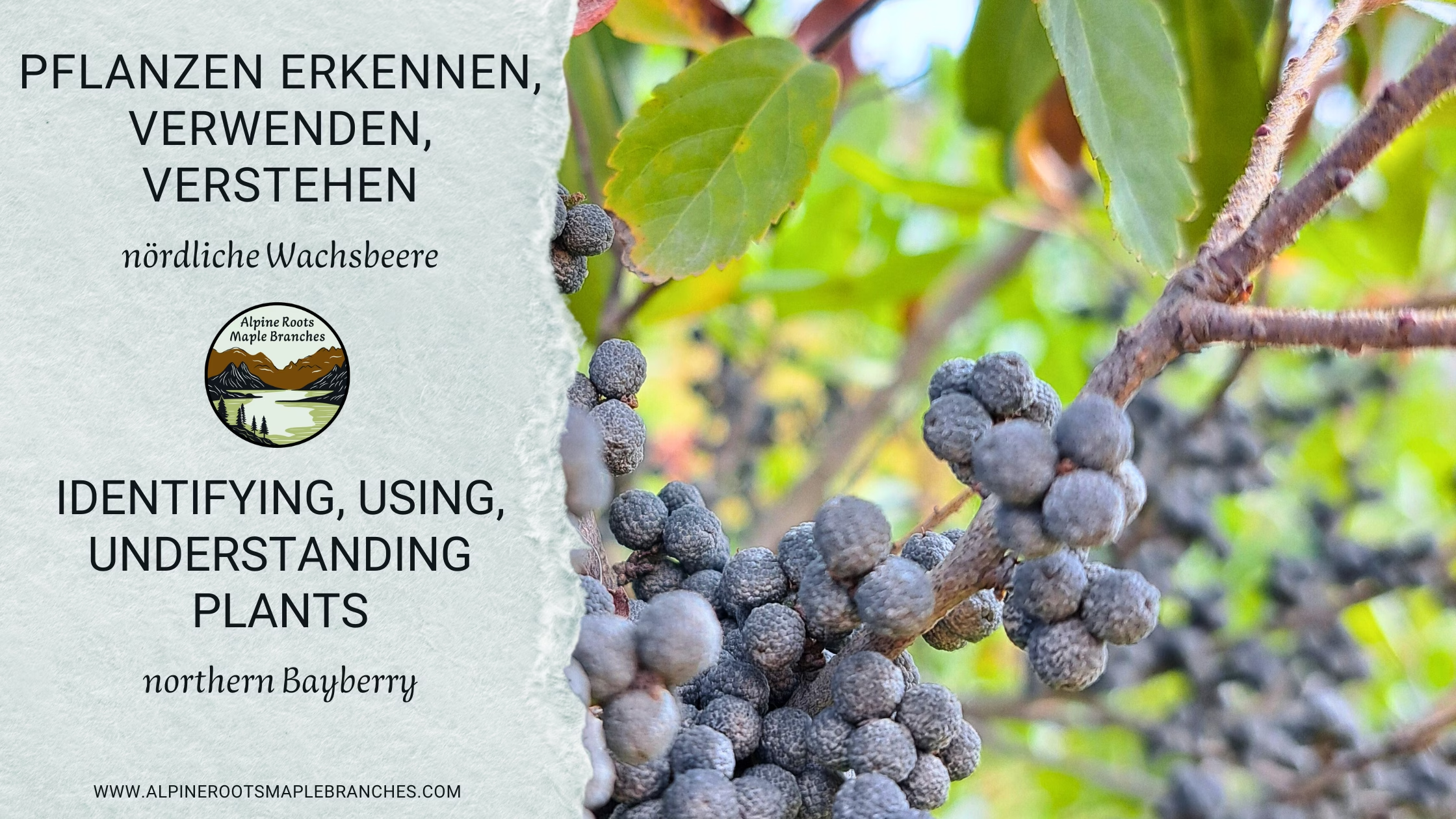On Cape Breton, the haunting season begins long before October 31. By September, skeletons appear among the spruces, orange string lights drape across porches, and supermarkets stack pumpkins high. This early start fits the broader Canadian trend: people are buying costumes and décor earlier than a few years ago, and a simple drive into town turns into a mini spooky tour.
I love looking at the decorated houses along the way when we go shopping. Some yards are staged so convincingly that I honestly get spooked by our own fence at night. Out here in the country, many places are festively dressed—but classic door-to-door trick-or-treating doesn’t really happen. The distance between homes is large; for kids it would be more of a night hike than a neighborhood stroll. Community events and central gathering spots matter all the more.
Table of Contents
Cape Breton: Events, Atmosphere, Community
Between sea fog and long country roads, a special mood takes shape here. Because door-to-door isn’t very practical, Halloween shifts into shared spaces: you meet familiar faces at the library, warm your hands at fire pits by the community hall, hear a fiddle somewhere in the dark, and lanterns sway on porches in the wind. From widely scattered homes, a web of meeting points emerges where stories, costumes, and laughter come together.
- Fortress of Louisbourg: The “Sinister Soirée” brings music, costumes, and crypt walks to the historic setting of the fortress. Tickets and info via the Fortress Louisbourg Association and Tourism Nova Scotia.
- Library as swap hub: The Cape Breton Regional Library hosts the “Trade or Treat! Halloween Costume and Décor Swap”—giving costumes and décor a second life and easing the strain on the wallet. Dates at cbrl.ca.
- Family festivals: Regional listings announce free afternoons with games and treats—a perfect alternative to door-to-door collecting. See cbisland.com for current tips.
Roots of the Spooky Night: From Samhain to Halloween
Halloween’s Gaelic roots are palpable on Cape Breton and reach back to Ireland and Scotland. In Gaelic, the evening of October 31 is “Oidhche Shamhna,” the night before Samhain, the traditional start of winter in the Celtic year. Samhain marked a threshold when the world of the living and the “Sìth”—the otherworld—drew close. That sense of a threshold still shapes the mood today: fog over the fields, wind in the spruces, early darkness, and the soft crackle of leaves—as if the world paused for breath.
Historically, Samhain included hearth and protection rites. Fire played a central role: communal bonfires were kindled, old flames were extinguished and rekindled from the new—symbolically restarting the winter half of the year. House blessings, small offerings to the “good neighbors” (fairies), and gathering for stories, songs, and dances helped people cross consciously into the darker season.
A key motif was dressing up—“guising.” Children and youths went from house to house in disguise, reciting rhymes or songs and receiving small gifts. Disguise served not only for entertainment but also as protection—if you’re not recognized, mischievous spirits can’t “catch” you as easily.
The famous pumpkin lantern is a North American development; in Ireland and Scotland, hollowed-out turnips with candles were used first. As Gaelic communities emigrated to the New World, the customs adapted. Pumpkins were plentiful, larger, and easier to carve—the shift from turnip to pumpkin was practical and visually appealing. Games like apple bobbing, lots and fortune-telling for the “story season,” and simple harvest/love oracles were part of it as well. In many places, Samhain practices later blended with Christian traditions around All Saints’ and All Souls’ Day into what we now call Halloween.
Why does this background feel so alive on Cape Breton? The island has been a major center of Gaelic language and culture in North America for centuries. Music, step-dance, storytelling, and a strong culture of local associations have kept seasonal thresholds like Samhain from becoming mere “spook nights”; they remain cultural anchor points. In rural communities where houses are far apart, door-to-door has naturally shifted into central gatherings in schools, community halls, or libraries—the core is the same: people meet, talk, laugh, show costumes, and keep the old idea alive of stepping together across the threshold into the darker season.
Here, Samhain isn’t dust from history but a quiet foundation beneath the modern haunting season—you notice it in the ease with which fire baskets, lanterns, music, and shared food fill the evenings. When we drive past lovingly decorated porches today, we’re not just seeing plastic spiders and gravestones but a long line of storytelling traditions that traveled with people—from the Gaelic Atlantic arc, along settler routes, to Cape Breton’s wind-open hills. That our haunting season plays out more in central meeting places than on tightly built streets isn’t a “deviation” but an adaptation—in the spirit of an old threshold time that always took the here-and-now seriously and turned what exists into something communal.
Celebrating Sustainably in the Countryside
We’re integrating sustainability step by step into our everyday life. Where it makes sense—and before things end up in the trash—we try to give them a second life and keep learning as we go. To be honest, we’re not swept up in Halloween fever: we don’t dress up and we don’t decorate much. Our only décor is our own homegrown pumpkins—and afterward they become soup, cake, or compost.
From that mindset, these ideas matter to us—they’re fun without heavy costumes or loads of décor, and they respect resources.
- Costume and décor swaps: Instead of buying new every year, check swap boxes among friends. If you like, host a small “try-on night” with tea and music—it’s budget-friendly, eco-friendly, and a cozy evening even if you’re not dressing up yourself.
- DIY instead of disposables: Wood offcuts, fabric, old jars, paper, and natural materials make durable pieces you can recombine each year. What we don’t need gets packed away neatly for next year—or passed on.
- Local treats and cooking: Cookies from neighbors, apple rings from a farm stand, or our own pumpkins in soup and cake—the Halloween season stays delicious and locally rooted. Small notes about origin make people crave more “local.”
- Smart lighting: LED strings and—where possible—solar lanterns create atmosphere with low use. A joint “light hour” with neighbors brings everyone together without lighting the whole night.
- Meeting points instead of door-to-door: Library, schoolyard, community hall—central places are gold. Mini parades, costume shows, or candy stations keep distances short and encounters long.
- Inclusion matters: Quiet zones, places to sit, and an early time window for very young or sensitive visitors help everyone feel at ease.
Canada by the Numbers: How Big Halloween Really Is
Surveys for 2024/2025 show a clear picture:
- 53% of Canadians plan to celebrate Halloween
- 83% will spend the same or more than last year
- Average spend: $67.65 per household;
- among parents: $121.57
- Earlier shopping: 47% shop 2–4 weeks before Oct 31 (2023: 34%)
- 73% of purchases still happen in-store
- 6,264,509 children of trick-or-treat age lived in Canada in 2024
For Cape Breton, that explains the early décor, full event calendars, and why stores step up by September.
A Warm Farewell
On Cape Breton, Halloween feels less like a costume rush and more like a soft October glow: drives through the island’s night, a quick pause at lovingly dressed porches, the scent of our own pumpkins in the kitchen, and meet-ups in shared places rather than long walks between houses.
With one foot in Gaelic tradition and the other in today’s island life, a small local celebration grows each year—simple, warm, and sustainable.
If you have tips, events, or favorite corners of the island in autumn, add them in the comments and help make the Halloween season even lovelier.

